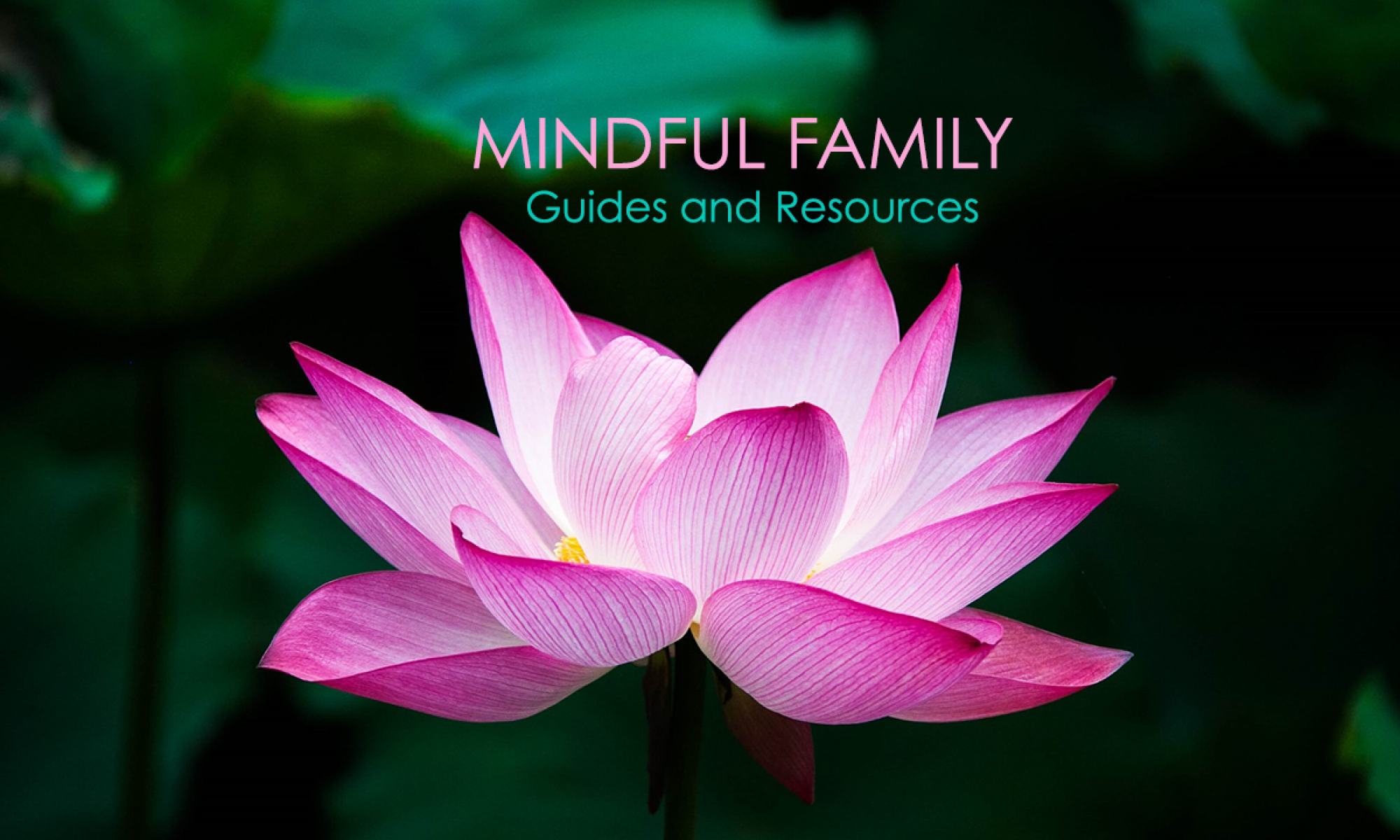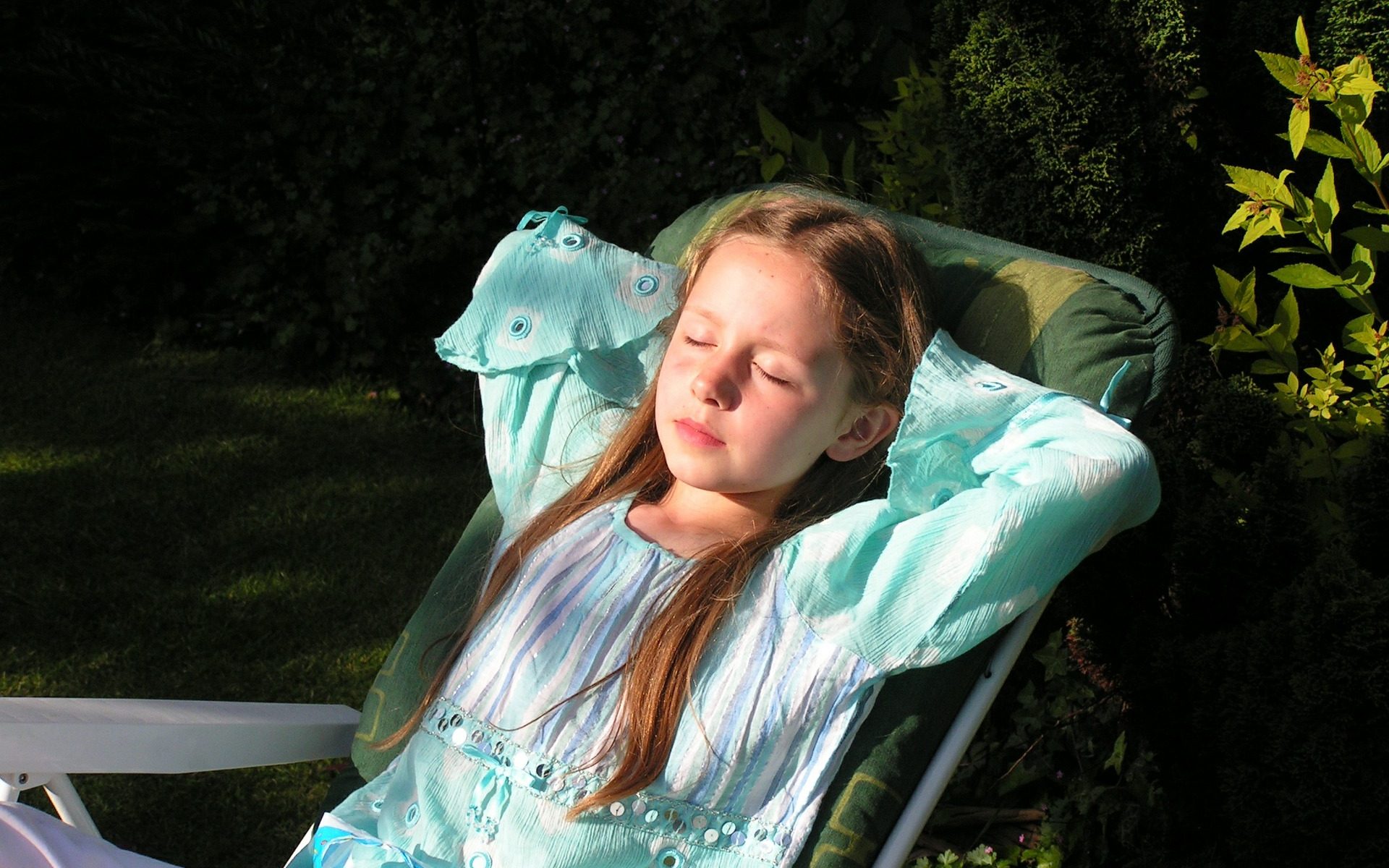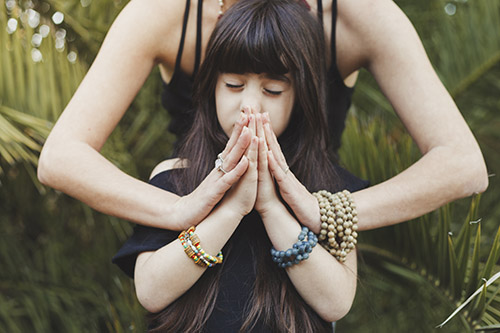By Zarqa Ahmad and Athena Williamson
What is Mindfulness?

Mindfulness can be defined as, “the ability to be fully present and attentive in the moment” (Sheridan, 2016). The foundational attitudes necessary to successfully progress towards mindful mastery are a beginner’s mind, patience, non-judging, non-striving, trust, letting go and acceptance (Sheridan, 2016). A beginner’s mind will stimulate a curious and new perspective to yourself and the world around you. Patience will guide you to work through the techniques at your own pace. A non-judging attitude will allow you to calmly and openly understand personal experiences, as well as those of others, without labelling them as right or wrong, neither good or bad. A non-striving perspective will encourage you to achieve feelings that are special to you, rather than specific goals; mindfulness is about what is inside, not an external entity. By trusting yourself, you will enable your strength and wisdom to guide you along your own path to mindfulness. Letting go will help you to release troubling thoughts from the past and future, which enable your mind and body to live in the present. Accepting your experiences and seeing the situations clearly from all points of view is the first step you can take towards a positive mindful change in your sense of being.
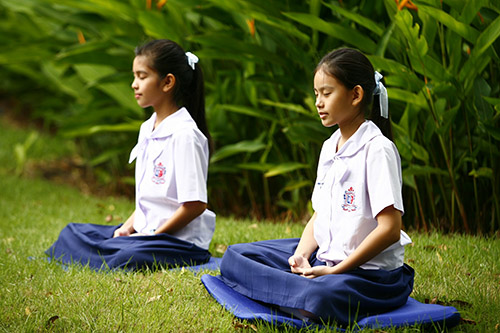
Therapeutic interventions such as meditation practice; mindfulness can help individuals disengage their “auto pilot” mode in order to look more carefully at their convictions and thought patterns. The act of pushing away negative thoughts and emotions in therapies such as cognitive behavioral theory can increase distress. So, practicing mindfulness can reduce that struggle by allowing people to relax and be calm while reflecting on his/her progress in the therapy. Therapeutic interventions help form self-awareness, and help clients induce a sense of physical and mental calmness.
You can practice the following mindfulness techniques wherever and whenever you can. All it takes is a moment to reflect on your experiences to progress your mindful development, one activity at a time. Mindfulness is not a quick fix, however, with one step at a time, you will get closer to reaching your own mindful awareness.
Mindful Moments
The Three Ps and the STOP Practice exercises can help a child to respond to situations rather than react in the moment; especially when facing a stressful or confrontational experience (Sheridan, 2016).
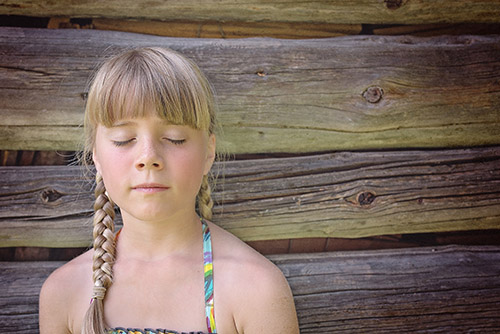
The Three Ps
- Pause. Bring focus to your breathing and release yourself from doing mode.
- Be Present. Notice the sensations of your body, the thoughts of your mind and the emotions of your soul. Be accepting to your current experience.
- Proceed. In this moment, pay close attention to what needs your full attention, enabling your sense of being.
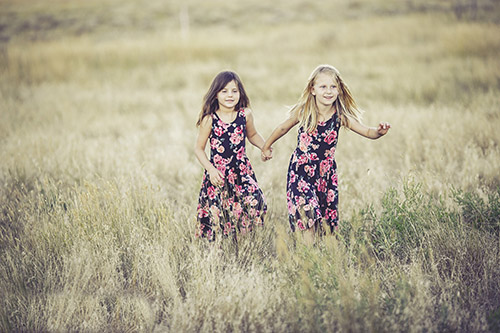
The STOP Practice
- Stop what you are doing.
- Take a deep breath and follow the air as it enters your lungs and exits your body.
- Observe your physical sensations, thoughts and emotions. Do you experience tension? – Focus on breathing through it.
- Proceed with the activity at hand when you feel a sense of calm through the exercise and find your centre. (Sheridan, 2016).
THINK ABOUT: What did you notice as you did these exercises? What was it like to transition from doing to being and reactive to responsive?
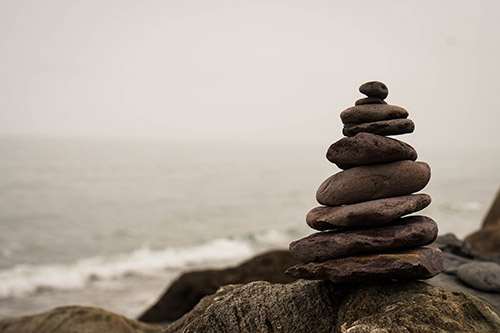
These mindfulness techniques can establish clarity of mind and allow for rational reasoning to the thought process. They bring your mind into a state of being present in the moment instead of compulsively doing an action or activity. These techniques can help you to deescalate internal and external stress which will influence self control over your emotions and help you to find balance of body and mind. It will enable improvements to adaptive coping, which will result in a faster recovery to the goal of a neutral emotional and physical state.
Mindful Meditation
The Three-Step Breathing Space is a formal practice of meditation, which provides you with the opportunity to take a minute for yourself to breath through your feelings of being overwhelmed with the stresses of life. This exercise can be done in any setting in as little as 30 seconds, to if you have time for.
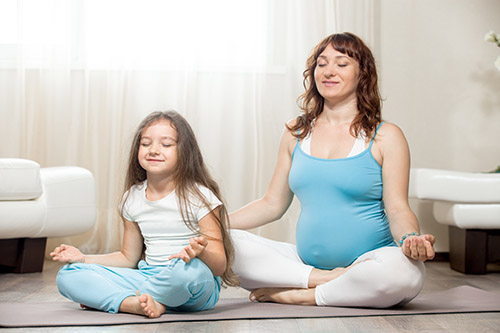
Three-Step Breathing Space
Sit tall with good posture in a chair and start taking deep breaths. Relax your shoulders down from your ears and rest your arms down by your sides; you can place your hands on your thighs.
- Collect Your Awareness: begin to listen to and understand your body and mind. What sensations do you feel from your head to toe? What thoughts are flowing through your mind? Accept these thoughts and feelings to move forward to the next step.
- Gather Your Attention: now draw your attention to the feelings of your abdomen as your breath in and out. Try to keep the breaths at the centre of your thoughts. If you find yourself thinking of other things, acknowledge the thoughts and transition back to your sensations of breathing.
- Expand Your Awareness: begin to pull your attention to your whole body as you breathe. Allow any tension to release with the exhale of your breaths. Feel the gentle flow of breathing from the top of your head, down to your toes. Accept all the sensations, as part of your complete living and breathing experience.
THINK ABOUT: Once the exercise is complete, consider what you noticed and reflect on the experience that breathing through your feelings of struggle has accomplished. (Sheridan, 2016)
The Three-Step Breathing Space Mindful technique will enable you to collect your awareness of your body, mind and environment, gather your attention to your unique experience and expand your awareness to enhance your physical and mental health and well-being. The ability to accept what is happening in a momentous experience will reflect your ability to accomplish a mindful act. Although it seems easy to do when reading through the exercise, mindfulness takes time to develop; little by little you will get closer to accomplishing mindfulness.
Mind and Body
Practicing the body scan can help you bring attention and awareness to your body. The body scan can help you to relax and shift from “doing” mode to “being” mode while accepting and acknowledging any stresses present (Sheridan, 2016).
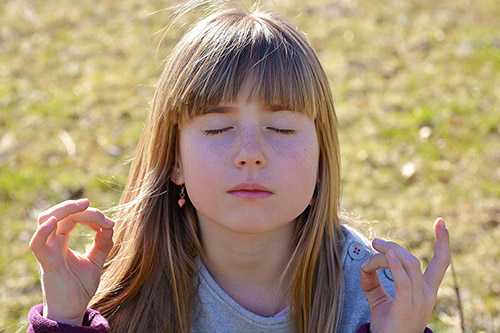
The Body Scan
- Start by lying down on your back on a flat surface with your palms facing up and feet slightly apart. Alternatively, you can also do this exercise sitting in a chair with your feet touching the ground.
- Lie still and breath in and out. Notice the rhythm of your breaths. As you breath in notice the different sensations your body is feeling. As you breath out let these sensations go.
- Pay attention to where your breathing is felt the most. Is it the stomach, chest or nostrils? Concentrate your breathing on that area for a few seconds.
- Now feel your breath moving down across your legs to your toes. How does it feel? Are they warm? Cold? Numb? Tingly? Is there no sensation?
- Feel your breath moving from your toes to the ankles. Sense what you’re feeling. What does it feel like?
- Breathe in and out and notice your breath moving up your legs to your stomach. Notice how your stomach rises and falls with each breath in and each breath out. Pause here for a few seconds and think of any feelings or stresses.
- Notice your breath moving from your stomach to your rib cage. Feel each exhale and inhale. Notice your heartbeat.
- Notice your breath moving down your arms to your hands. Feel the sensations in your fingers.
- Notice where your spine connects to your neck. Notice your breath moving from your lips to your eyes and now spreading around your entire body.
- Imagine your breath giving life to your body.
THINK ABOUT: After the exercise, think about and compare how you felt before, during and after practicing the body scan. (Sheridan, 2016)
Five Senses Exercise
This is a quicker exercise that the body scan and can help one be brought to the mindful state. This exercise requires only one to two minutes to complete. (Positive Psychology Program, 2017)
- Look around.
- Identify five things you can see. Pick an object you don’t usually notice like a shadow or a tiny rock.
- Identify four things you can currently feel. These four things can be anything such as the warm sun hitting your skin or the softness of your sweater.
- Identify three things you can hear. Be creative these things can be anything like the sound of the wind or the sound of the car on the road.
- Identify two things you can smell. Are these normal smells? Pick a smell you typically don’t notice. Can you smell the flowers in the grass or the smell of rain?
- What’s one thing you can taste right now? Bring your attention to the texture and describe what it tastes like.
The Mindful Jar
This interactive mindfulness technique can help one positively cope with strong emotions. (Positive Psychology Program, 2017).

- Get a clear mason jar and fill it with water.
- Add some glitter glue to the jar.
- Shake the jar and watch as the glitter swirls around the jar.
- Imagine that the glitter represents your thoughts when you’re mad, sad or stressed out. The glitter’s making it hard to see through the glass. This is what happens when you’re mad or upset, it’s hard to think or see clearly
- Now put the jar down and let it sit for a few minutes.
- Watch as the glitter settles to the bottom of the jar.
- Can you see through the glass now?
- This is what happens when you pause and let your emotions be calm. You can see and think clearer (Blissful Kids, 2017).
Try Our Mindfulness Techniques Video
Video created by
Zarqa Ahmad and Athena Williamson
6 mins, November 2018
Mindful Child Resources
Mindfulness and Meditation Videos for Kids

The Cosmic Kids mindfulness meditation videos are a perfect way to incorporate healthy screen-time in the home and classroom settings for the body and mind. It is a popular website resource among parents, teachers, and children alike. It incorporates fun, kid-friendly yoga, mindfulness and relaxation with the host of the videos, Jaime, and can be accessed through the Cosmic Kids YouTube Channel. It is reported by parents and teachers that by using these videos, significant improvements to children’s ability to self- regulate emotions, focus their attention and empathize with others were observed.
URL: https://www.cosmickids.com/mindfulness-meditation-videos-kids/
Mindfulness for Children

Annaka Harris, author of the children’s book, I Wonder and editor of Mindful Games, created the mindfulness for children program to support the development of concentration and self-awareness at the malleable age of 8 to 11 years of age. The program incorporates a variety of mindfulness exercises to stimulate the mind and achieve a sense of being present in the moment, such as: mindful hearing, mindful breathing, mindful seeing, and friendly wishes. Also available in this website resource are a series of interactive mindful games (activity cards), guided meditations, lessons on mindfulness and podcast interviews (ex. 10% Happier Podcast Interview).
URL: https://annakaharris.com/mindfulness-for-children/
10 Ways to Teach Mindfulness to Kids

The website resource, the Left Brain Buddha, is a valuable resource for parents and children to incorporate mindfulness in 10 fun and simple exercises developed by Sarah Rudell Beach. The use of these mindfulness techniques will enable the child to develop emotional regulation and cognitive focus to make better decisions and calmly respond to situations rather than reacting irrationally. The website also provides a video resource to the breathing buddies mindfulness technique with Daniel Goleman and a series of external resources to various other exercises to stimulate mindfulness.
URL: https://leftbrainbuddha.com/10-ways-teach-mindfulness-to-kids/
Kids Yoga

The yoga for kids section on the Gaia online resource provides a collection of videos designed to entice discovery, build strength and increase flexibility of the body and mind through their fun yoga sequences. It delivers a channel to tap into children’s busy lives and allow them to reconnect with themselves and the world around them. The videos encourage relaxation, positivity, creativity and silliness, as the poses guide them through interactive stories to benefit their physical, emotional and mental health and well-being.
URL: https://www.gaia.com/style/kids-yoga
3 Kid-Friendly Meditations Your Children Will Love

This is a thoughtful article by Melissa Eisler, that outlines the benefits of meditation for children experiencing stress and anxiety, as well as those diagnosed with attention deficit hyperactivity disorder and depression. Meditation can increase attentiveness and self control as well as respect and empathy for others. The children who utilize these mindful meditation techniques will find they enable them to morph their negative thoughts and behaviors into focussed self-confidence and accepting perceptions of themselves and that of others. Also linked to this online resource is a meditation app for kids to use on mobile devices, which enables convenience for children to practice meditation on the go.
URL: https://chopra.com/articles/3-kid-friendly-meditations-your-children-will-love
NY Time’s Mindfulness for Children

This website goes through several mindfulness practices and techniques for children and adults. It covers topics for infants, toddlers, children, older children and teenagers. There are also several links to videos and external resources which provide mindfulness games. The site also provides step by step instructions with pictures of how to perform each technique.
URL: https://www.nytimes.com/guides/well/mindfulness-for-children
Mindfulness Activities for Children and Teens

This website goes through several different mindfulness techniques including the incorporation of games, videos and step by step instructions. They also include tips that adults can utilize to help their children with these activities. The activities range from fun interactive activities to meditation techniques. Several apps are also recommended on the site to help facilitate mindfulness in children.
URL: https://positivepsychologyprogram.com/mindfulness-for-children-kids-activities/
Meditation for Kids

This resource requires a free subscription and is available in an app format as well as the website format. It goes through five different areas children can explore. The topic areas for meditation include; calm, focus, kindness, sleep and wakeup. These exercises help children practice breathing techniques, and specific visualizations techniques.
URL: https://www.headspace.com/meditation/kids
7 Fun Ways to Teach Your Kids Mindfulness

This website goes through seven different exercises children can practice. Parents can also go through these exercises with their children. The exercises include the bell listening exercise, breathing buddies, the squish and relax meditation, smell and tell, the art of touch, the heartbeat exercise, and heart-to-heart. The website also includes links to external pages for additional information.
URL: lhttps://www.mindbodygreen.com/0-18136/7-fun-ways-to-teach-your-kids- mindfulness.html
15 Mindfulness and Relaxation Apps for Kids with Anxiety

This resource provides 15 apps children who experience anxiety can utilize to induce a sense of mindfulness. Descriptions and costs of each app are included as well as graphical representations. Along with each description, the ways
in which each app can benefit the child is also described. The website also goes through several children’s books that can help with mindfulness.
URL: http://parentingchaos.com/anxiety-apps-kids/
References
Blissful Kids (2017). Mindfulness for Kids and Teens – Calming Glitter Jar aka Mind Jar.
Retrieved from: https://blissfulkids.com/mindfulness-kids-teens-calming-glitter-jar-aka-mind-jar/
Positive Psychology Program (2017). Mindfulness activities for children and teens: 25 fun exercises for kids. Retrieved from: https://positivepsychologyprogram.com/mindfulness-for-children-kids-activities/
Sheridan, C. (2016). The mindful nurse: using the power of mindfulness and compassion to help you thrive in your work. Charleston, SC: Rivertime Press. ISBN: 978-0-9933245-2-9. Paperback
